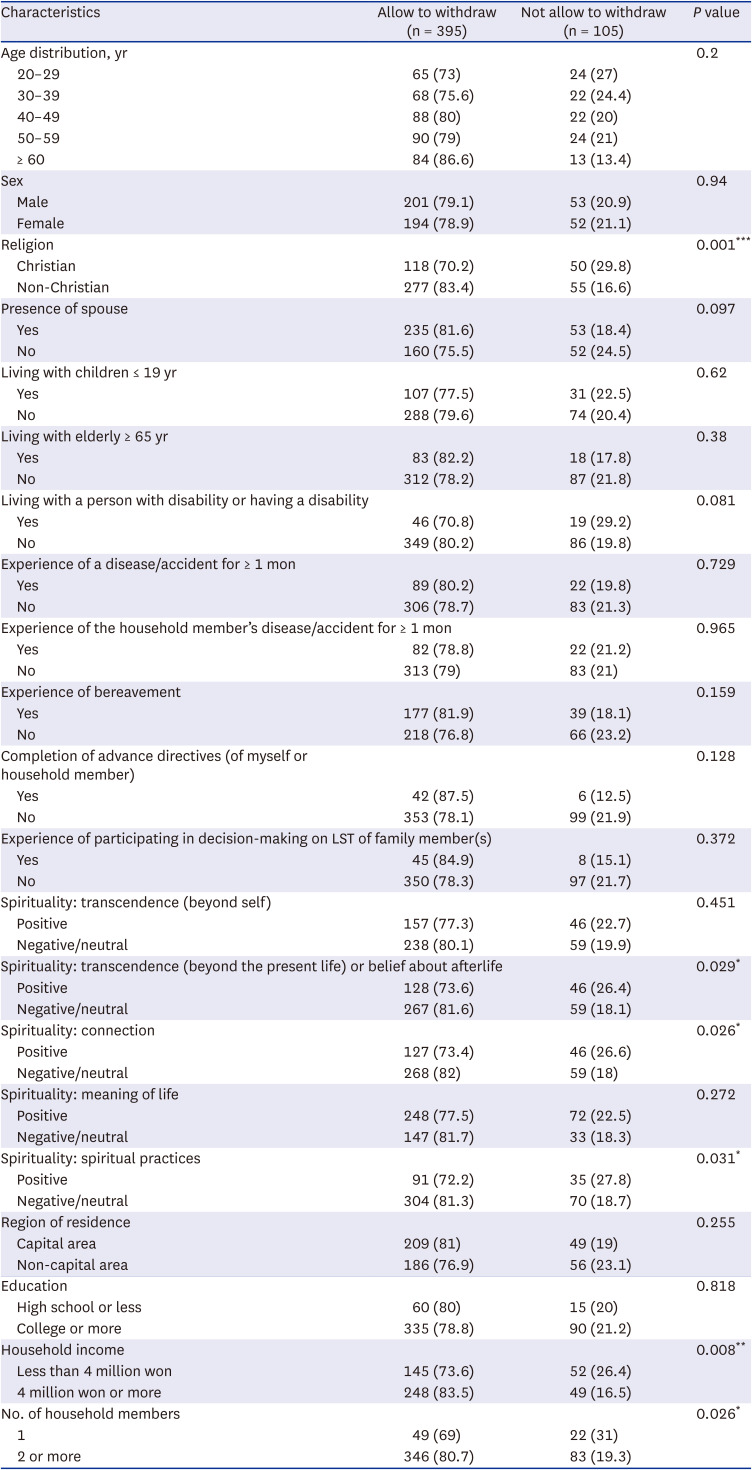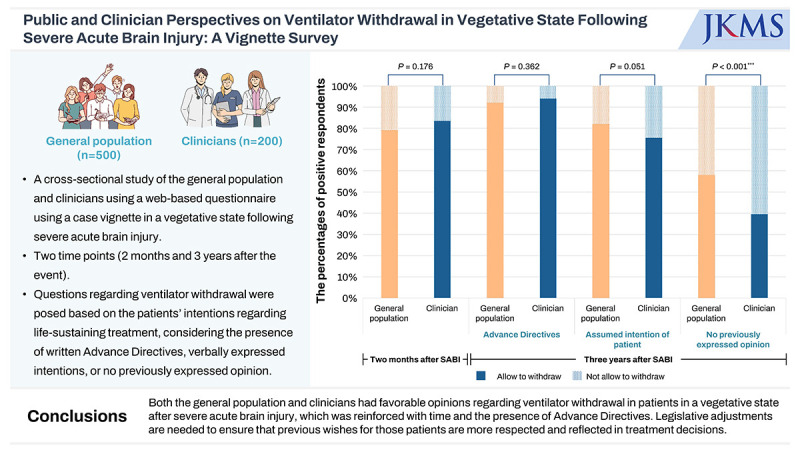1. Giacino JT, Katz DI, Schiff ND, Whyte J, Ashman EJ, Ashwal S, et al. Practice guideline update recommendations summary: Disorders of consciousness: report of the Guideline Development, Dissemination, and Implementation Subcommittee of the American Academy of Neurology; the American Congress of Rehabilitation Medicine; and the National Institute on Disability, Independent Living, and Rehabilitation Research. Neurology. 2018; 91(10):450–460. PMID:
30089618.
2. Jennett B. The vegetative state. J Neurol Neurosurg Psychiatry. 2002; 73(4):355–357. PMID:
12235296.
3. Lee YS, Lee HY, Leigh JH, Choi Y, Kim HK, Oh BM. The socioeconomic burden of acquired brain injury among the Korean patients over 20 years of age in 2015–2017: a prevalence-based approach. Brain Neurorehabil. 2021; 14(3):e24. PMID:
36741222.
4. Kim HK, Leigh JH, Kim TW, Oh BM. Epidemiological trends and rehabilitation utilization of traumatic brain injury in Korea (2008–2018). Brain Neurorehabil. 2021; 14(3):e25. PMID:
36741218.
5. Bae SW, Lee MY. Incidence of traumatic brain injury by severity among work-related injured workers from 2010 to 2019: an analysis of workers’ compensation insurance data in Korea. J Occup Environ Med. 2022; 64(9):731–736. PMID:
35673265.
6. Yang SN, Park SW, Jung HY, Rah UW, Kim YH, Chun MH, et al. Korean brain rehabilitation registry for rehabilitation of persons with brain disorders: annual report in 2009. J Korean Med Sci. 2012; 27(6):691–696. PMID:
22690103.
7. Septien S, Rubin MA. Disorders of consciousness: ethical issues of diagnosis, treatment, and prognostication. Semin Neurol. 2018; 38(5):548–554. PMID:
30321893.
8. Picozzi M, Panzeri L, Torri D, Sattin D. Analyzing the paradigmatic cases of two persons with a disorder of consciousness: reflections on the legal and ethical perspectives. BMC Med Ethics. 2021; 22(1):88. PMID:
34238274.
9. Jennett B. Thirty years of the vegetative state: clinical, ethical and legal problems. Prog Brain Res. 2005; 150:537–543. PMID:
16186047.
10. Lee I. South Korea’s end-of-life care decisions act: law for better end-of-life care. Cheung D, Dunn M, editors. Advance Directives Across Asia: a Comparative Socio-Legal Analysis. Cambridge, UK: Cambridge University Press;2023. p. 57–74.
11. Korea National Institute for Bioethics Policy. White Papers on the Law on Decisions on Life-Sustaining Treatment. Seoul, Korea: Korea National Institute for Bioethics Policy;2018.
13. Yoo SH, Kim Y, Choi W, Shin J, Kim MS, Park HY, et al. Ethical issues referred to clinical ethics support at a university hospital in Korea: three-year experience after enforcement of life-sustaining treatment decisions act. J Korean Med Sci. 2023; 38(24):e182. PMID:
37337807.
14. Yoo SH, Choi K, Nam S, Yoon EK, Sohn JW, Oh BM, et al. Development of Korea Neuroethics guidelines. J Korean Med Sci. 2023; 38(25):e193. PMID:
37365727.
15. Puchalski CM. Spirituality and the care of patients at the end-of-life: an essential component of care. Omega (Westport). 2007-2008; 56(1):33–46.
16. Wikstøl D, Horn MA, Pedersen R, Magelssen M. Citizen attitudes to non-treatment decision making: a Norwegian survey. BMC Med Ethics. 2023; 24(1):20. PMID:
36890542.
17. Kondziella D, Cheung MC, Dutta A. Public perception of the vegetative state/unresponsive wakefulness syndrome: a crowdsourced study. PeerJ. 2019; 7:e6575. PMID:
30863687.
18. Gipson J, Kahane G, Savulescu J. Attitudes of lay people to withdrawal of treatment in brain damaged patients. Neuroethics. 2014; 7(1):1–9. PMID:
24600485.
19. Demertzi A, Ledoux D, Bruno MA, Vanhaudenhuyse A, Gosseries O, Soddu A, et al. Attitudes towards end-of-life issues in disorders of consciousness: a European survey. J Neurol. 2011; 258(6):1058–1065. PMID:
21221625.
20. Phua J, Joynt GM, Nishimura M, Deng Y, Myatra SN, Chan YH, et al. Withholding and withdrawal of life-sustaining treatments in intensive care units in Asia. JAMA Intern Med. 2015; 175(3):363–371. PMID:
25581712.
21. van Veen E, van der Jagt M, Citerio G, Stocchetti N, Epker JL, Gommers D, et al. End-of-life practices in traumatic brain injury patients: report of a questionnaire from the CENTER-TBI study. J Crit Care. 2020; 58:78–88. PMID:
32387842.
22. Becker KJ, Baxter AB, Cohen WA, Bybee HM, Tirschwell DL, Newell DW, et al. Withdrawal of support in intracerebral hemorrhage may lead to self-fulfilling prophecies. Neurology. 2001; 56(6):766–772. PMID:
11274312.
23. Geocadin RG, Buitrago MM, Torbey MT, Chandra-Strobos N, Williams MA, Kaplan PW. Neurologic prognosis and withdrawal of life support after resuscitation from cardiac arrest. Neurology. 2006; 67(1):105–108. PMID:
16832087.
24. Turgeon AF, Lauzier F, Simard JF, Scales DC, Burns KE, Moore L, et al. Mortality associated with withdrawal of life-sustaining therapy for patients with severe traumatic brain injury: a Canadian multicentre cohort study. CMAJ. 2011; 183(14):1581–1588. PMID:
21876014.
25. Geurts M, Macleod MR, van Thiel GJ, van Gijn J, Kappelle LJ, van der Worp HB. End-of-life decisions in patients with severe acute brain injury. Lancet Neurol. 2014; 13(5):515–524. PMID:
24675048.
26. Kitzinger J, Kitzinger C. Deaths after feeding-tube withdrawal from patients in vegetative and minimally conscious states: a qualitative study of family experience. Palliat Med. 2018; 32(7):1180–1188. PMID:
29569993.
27. Turner-Stokes L, Thakur V, Dungca C, Clare C, Alfonso E. End-of-life care for patients with prolonged disorders of consciousness following withdrawal of life-sustaining treatment: experience and lessons from an 8-year cohort. Clin Med (Lond). 2022; 22(6):559–565. PMID:
36427896.
28. Tsai DFC. The law and practice of advance directives in Taiwan. Cheung D, Dunn M, editors. Advance Directives Across Asia: a Comparative Socio-Legal Analysis. Cambridge, UK: Cambridge University Press;2023. p. 75–89.
29. Wakatake H, Hayashi K, Kitano Y, Hsu HC, Yoshida T, Masui Y, et al. Eleven-year retrospective study characterizing patients with severe brain damage and poor neurological prognosis -role of physicians’ attitude toward life-sustaining treatment. BMC Palliat Care. 2022; 21(1):79. PMID:
35581603.
30. Chang DW, Neville TH, Parrish J, Ewing L, Rico C, Jara L, et al. Evaluation of time-limited trials among critically ill patients with advanced medical illnesses and reduction of nonbeneficial ICU treatments. JAMA Intern Med. 2021; 181(6):786–794. PMID:
33843946.
31. Sprung CL, Maia P, Bulow HH, Ricou B, Armaganidis A, Baras M, et al. The importance of religious affiliation and culture on end-of-life decisions in European intensive care units. Intensive Care Med. 2007; 33(10):1732–1739. PMID:
17541550.
32. Bülow HH, Sprung CL, Baras M, Carmel S, Svantesson M, Benbenishty J, et al. Are religion and religiosity important to end-of-life decisions and patient autonomy in the ICU? The Ethicatt study. Intensive Care Med. 2012; 38(7):1126–1133. PMID:
22527070.
33. Park SY, Phua J, Nishimura M, Deng Y, Kang Y, Tada K, et al. End-of-life care in ICUs in East Asia: a comparison among China, Korea, and Japan. Crit Care Med. 2018; 46(7):1114–1124. PMID:
29629982.
34. Jox RJ, Kuehlmeyer K, Klein AM, Herzog J, Schaupp M, Nowak DA, et al. Diagnosis and decision making for patients with disorders of consciousness: a survey among family members. Arch Phys Med Rehabil. 2015; 96(2):323–330. PMID:
25449192.
35. Breitbart W, Heller KS. Reframing hope: meaning-centered care for patients near the end of life. Interview by Karen S. Heller. J Palliat Med. 2003; 6(6):979–988. PMID:
14733692.







 PDF
PDF Citation
Citation Print
Print







 XML Download
XML Download